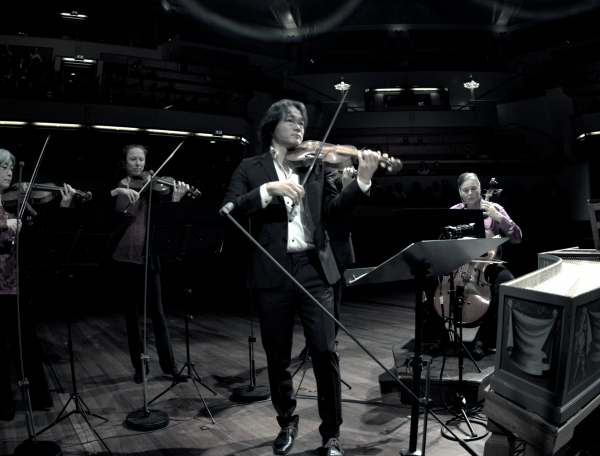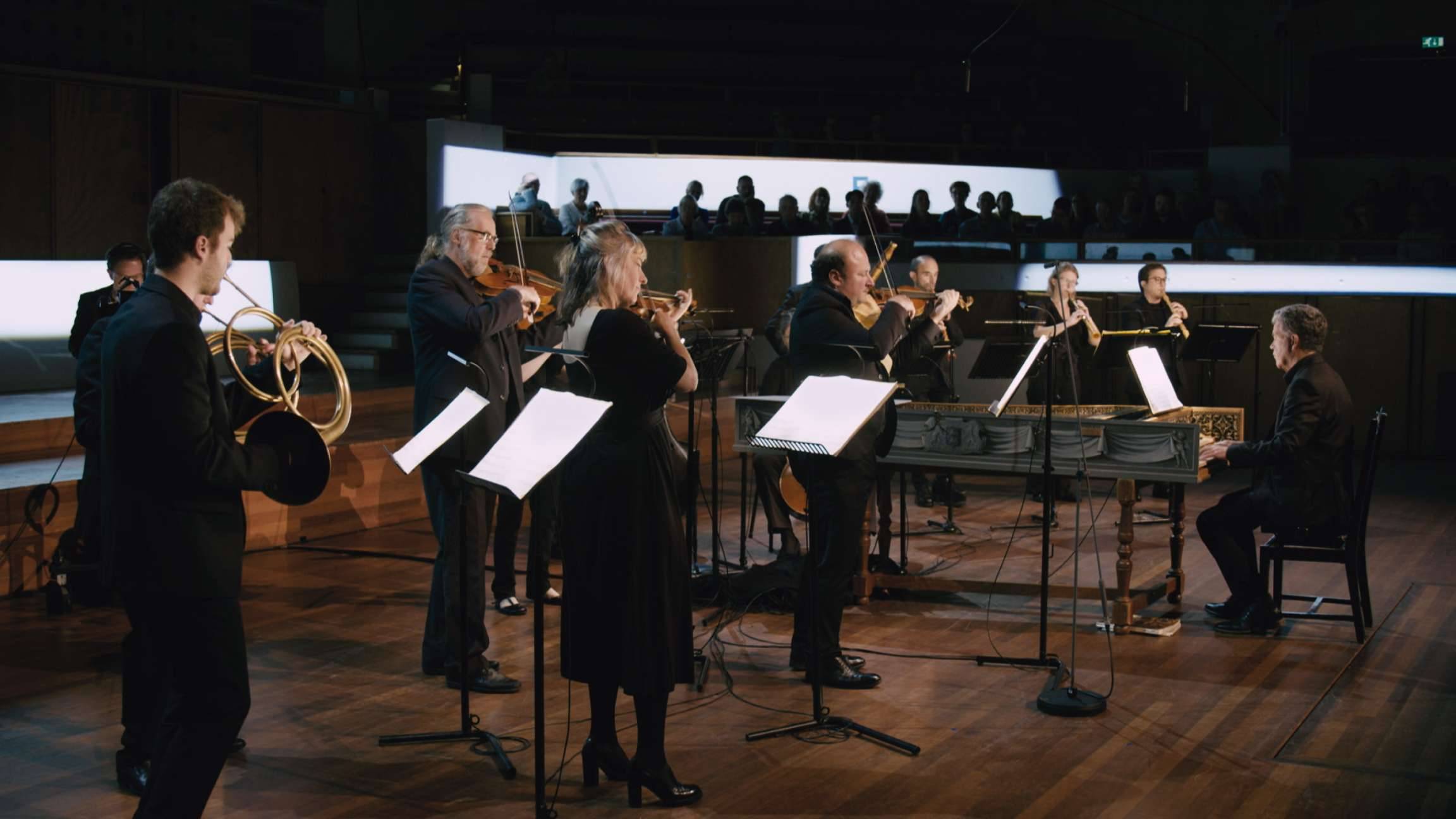

'Brandenburg' Concerto No. 1 in F major
BWV 1046 performed by the Netherlands Bach Society
conducted by Bojan Čičić
TivoliVredenburg, Utrecht
Behind the music
Exciting three-way combat
Virtuoso transition from Italian concerto grosso to French suite
On turning over the impressive title page of the ‘Brandenburg’ concertos, two hunting horns immediately blare through the rest of the music – calling everyone to gather together! Bach deliberately lets the persistent horns disturb his music. Just listen to how they play three against four with bravura, and even clash with the harmony. It’s certainly exciting, but at the same time horns were a status symbol, as brass players earned a celebrity salary. Many a nobleman could not afford such luxuries, but Bach’s patron Christian Ludwig van Brandenburg didn’t need to pay a second thought to that problem.
Bach juxtaposes three ‘choirs’, as besides the two horns, a group of three oboes and a bassoon also plays opposite the strings. This setup led at least one Bach researcher to the sociological conclusion that here the aristocracy (military horns) are played off against the court (elegant strings) and the people (town pipers). Whatever the case, if the aristocracy did indeed want to elevate themselves above the mob, then in the first movement they gradually join the musical ranks in orderly fashion. Bach plays the groups off against each other in continually changing combinations, resulting in true connoisseurs’ music.
In the movements that follow, the solos are distributed fairly among the oboe, the collective bass instruments and the violino piccolo: an instrument that is tuned a third higher than a normal violin. Here, we’re definitely in the realm of the Italian concerto grosso, in which solo instruments distinguish themselves from the crowd through their virtuoso performance. This is particularly so in the third movement, where the violin soloist has their cake and eats it. But afterwards, Bach chooses a different stylistic path, adding a fourth movement: a suite of dances from the French, German and Polish traditions. While less virtuoso and not always so courtly and elegant, they have all the more character, whereby the opening minuet acts like a sort of refrain.
'Brandenburg' concertos, BWV 1046-1051
In March 1721, Bach sent a manuscript from Köthen to Berlin entitled ‘Six concertos with several instruments’ (Six concerts avec plusieurs instruments), dedicated to Christian Ludwig (1677-1734), Margrave of Brandenburg-Schwedt. In the preface, Bach stated that he had played for the margrave ‘a couple of years ago’ and had promised to send him ‘some of his compositions’. That was probably during a visit to Berlin in March 1719, when Bach had travelled to the Prussian capital to take receipt of a new harpsichord for the court in Köthen. The music that he sent to the margrave a couple of years later (which subsequently became known as the 'Brandenburg' Concertos) was Bach’s ultimate view of the most important large-scale instrumental genre of his day: the concerto.
A concerto nearly always involves a solo instrument (or combination of solo instruments) and an ensemble. The key idea is the alternation between one or more soloists and the whole ensemble, in a sort of light-hearted competition. In the six 'Brandenburg' Concertos, Bach explores every facet of this genre, with regard to both instrumentation and the way in which he handles the form. All the traditionally used string and wind instruments and the harpsichord appear as soloists, the musical forms range from court dances to near-fugues, and the relationship between the solos and tutti instruments is always shifting. Together, the six concertos thus form a virtuoso sample sheet of the Baroque concerto.
- BWV
- 1046
- Title
- Concerto in F major
- Epithet
- ‘Brandenburg’ Concerto No. 1
- Genre
- orchestral works
- Serie
- Brandenburg concertos
- Year
- 1719-1720
- City
- Köthen (but maybe even earlier in Weimar)
- Occasion
- Dedicated in 1721 to Margrave Christian Ludwig van Brandenburg
Extra videos
Vocal texts
Original
Translation
Credits
-
- Release date
- 28 November 2024
-
- Recording date
- 4 October 2023
-
- Location
- TivoliVredenburg, Utrecht
-
- Violin and leader
- Bojan Čičić
-
- Violin 1
- Lidewij van der Voort
-
- Violin 2
- Pieter Affourtit
-
- Viola
- Femke Huizinga
-
- Cello
- Lucia Swarts
-
- Double bass
- Hen Goldsobel
-
- Bassoon
- Benny Aghassi
-
- Oboe
- Rodrigo López Paz, Katharina Verhaar, Pedro Castro
-
- Horn
- Bart Aerbeydt, Milo Maestri
-
- Harpsichord
- Siebe Henstra
-
- Director and editor
- Bas Wielenga
-
- Music recording
- Guido Tichelman, Pim van der Lee, Lilita Dunska, Chris Everts
-
- Music edit and mix
- Guido Tichelman
-
- Camera
- Onno van Ameijde, Rieks Soepenberg, Carrien Dijkstra, Martine Rozema
-
- Camera assistant
- Merijn Stojansek
-
- Lights
- Ernst-Jan Thieme
-
- Assistant director
- Ferenc Soeteman
-
- Assistant music recording
- Marloes Biermans
-
- Producer concert
- Stephan Esmeijer
-
- Producer film
- Wietske Hovingh
Discover
Help us to complete All of Bach
There are still many recordings to be made before the whole of Bach’s oeuvre is online. And we can’t complete the task without the financial support of our patrons. Please help us to complete the musical heritage of Bach, by supporting us with a donation!

